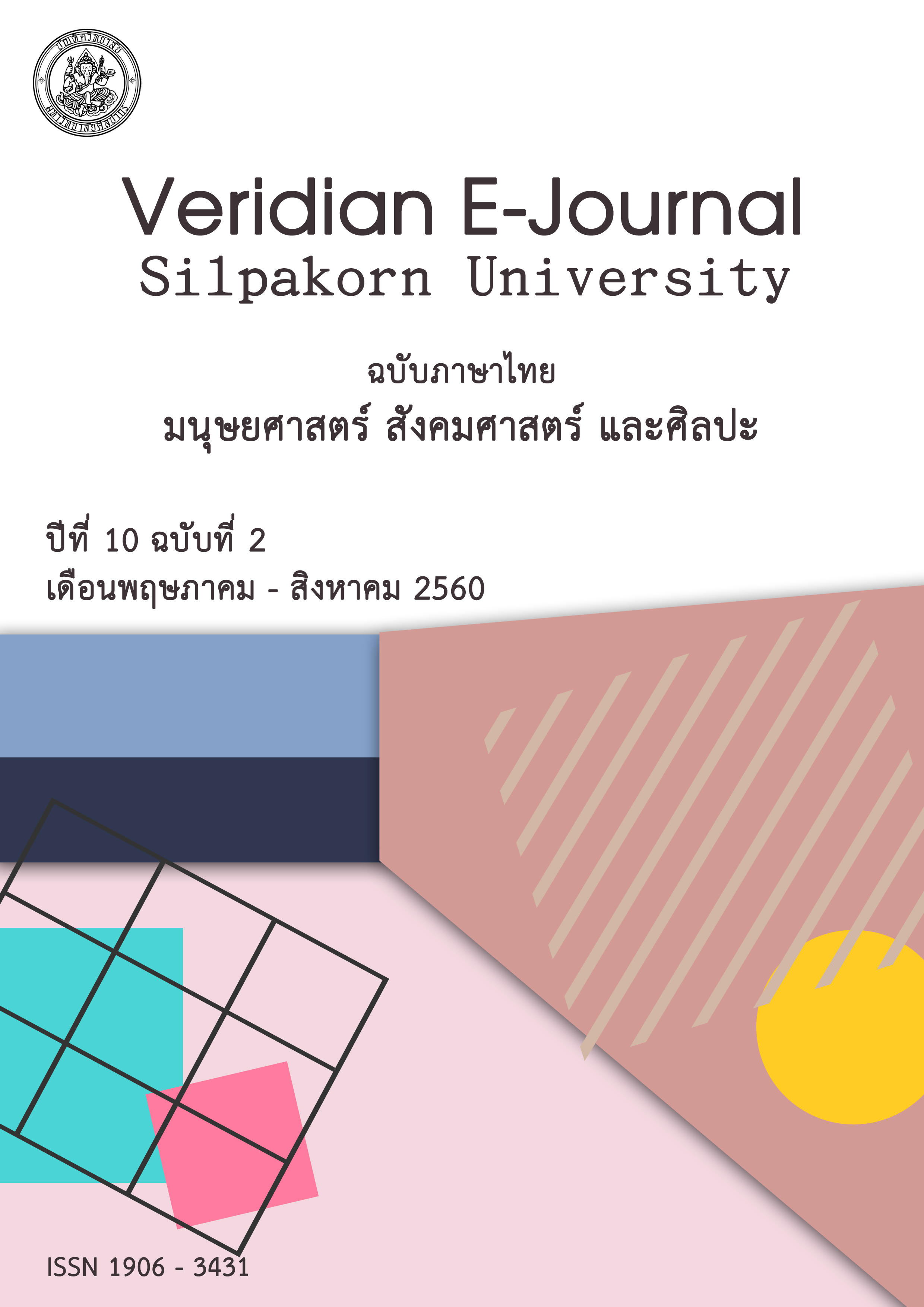ความสัมพันธ์ระหว่างการดำเนินงานตามแนววิถีพุทธกับ พฤติกรรมการเรียนตามหลัก อิทธิบาท 4 ของนักเรียนชั้นประถมศึกษาปีที่6 โรงเรียนสังกัดสำนักงาน เขตพื้นที่การศึกษานครปฐม เขต 2
Main Article Content
บทคัดย่อ
การวิจัยครั้งนี้มีวัตถุประสงค์เพื่อศึกษา 1) ระดับการรับรู้การดำเนินงานตามแนววิถีพุทธ ของนักเรียนชั้นประถมศึกษาปีที่ 6 โรงเรียนสังกัดสำนักงานเขตพื้นที่การศึกษานครปฐม เขต 2 2) ระดับพฤติกรรมการเรียนตามหลักอิทธิบาท4 ของนักเรียน 3) เปรียบเทียบพฤติกรรมการเรียนตามหลักอิทธิบาท4 ของนักเรียนตามข้อมูลส่วนบุคคล ได้แก่ เพศ ผลสัมฤทธิ์ทางการเรียน อาชีพของผู้ปกครอง รายได้ของผู้ปกครอง สภาพการพักอาศัย 4) ความสัมพันธ์ระหว่างการดำเนินงานตามแนววิถีพุทธ กับ พฤติกรรมการเรียนตามหลักอิทธิบาท4ของนักเรียน กลุ่มตัวอย่างเป็นนักเรียนชั้นประถมศึกษาปีที่ 6 โรงเรียนสังกัดสำนักงานเขตพื้นที่การศึกษานครปฐม เขต 2 จำนวน 342 คน ใช้วิธีการสุ่มแบบหลายขั้นตอน คือการสุ่มแบบกลุ่ม และการสุ่มแบบแบ่งชั้นตามสัดส่วนของโรงเรียนและเพศ เครื่องมือที่ใช้ในการวิจัยคือแบบสอบถาม สถิติที่ใช้ในการวิเคราะห์ข้อมูลได้แก่ ค่าร้อยละ ค่าเฉลี่ย และส่วนเบี่ยงเบนมาตรฐาน การเปรียบเทียบความแตกต่างระหว่างกลุ่มใช้การทดสอบ t-test การทดสอบ F-test ตรวจสอบรายคู่ด้วยวิธีการของ Scheffé และวิธีการ Least Significant Difference (LSD) และวิเคราะห์ความสัมพันธ์แบบเพียร์สัน (Pearson’s Correlation Coefficient)
ผลการวิจัยพบว่า
- นักเรียนชั้นประถมศึกษาปีที่ 6 โรงเรียนสังกัดสำนักงานเขตพื้นที่การศึกษานครปฐม เขต 2 ที่เป็นกลุ่มตัวอย่าง มีการรับรู้ว่าการดำเนินงานตามแนววิถีพุทธโดยรวมอยู่ในระดับมาก
- นักเรียนมีพฤติกรรมการเรียนตามหลักอิทธิบาท4โดยรวม อยู่ในระดับปานกลาง
- นักเรียน ที่มีเพศ ผลสัมฤทธิ์ทางการเรียน และ รายได้ของผู้ปกครองต่างกัน มีพฤติกรรมทาง การเรียนตามหลักอิทธิบาท 4 แตกต่างกัน อย่างมีนัยสำคัญที่ระดับ .05
- การดำเนินงานตามแนววิถีพุทธด้านกายภาพ ด้านกิจกรรมพื้นฐานวิถีชีวิต ด้านการเรียนการสอน ด้านบรรยากาศและปฏิสัมพันธ์ และพฤติกรรมการเรียนตามหลักอิทธิบาท 4 มีความสัมพันธ์กันทางบวกอย่าง มีนัยสำคัญทางสถิติที่ระดับ .01
The purposes of this study were 1) to study the perception on the implementation of Buddhist learning of Grade 6 students schools in the Nakronpathom primary educational service area office 2. 2) to study the behavior Under the 4 basics for success of students. 3) to compare study the behavior under the 4 basics for success of students as classified by sex Learning Achievement parental occupation parental income living status 4) The relationship between the implementation of Buddhist learning behavior under the 4 basics for success of students. Sample were 342 Grade 6 studentsschools in the Nakronpathom primary educational service area office 2, derived by Stratified Random Sampling technique proportion of school and sex. Instruments were test on questionnaies constructed by the researcher. Data were analyzed by percentage, mean, standard deviation, t-test, One-way ANOVA and Pearson’s Correlation Coefficient
The result were:
- Grade 6 students of schools in the Nakronpathom primary educational service area office 2’ perception on the implementation of Buddhist learning were at the high level.
- Students’behavior Under the 4 basics for success were at the moderate level.
- Students’ behavior Under the 4 basics for success of different level of sex learning achievement and parental income were significantly different at a statistical level of .05.
- The implementation of Buddhist learning in the school physical, the activity of school, the learning and teaching, the school climate and interaction and behavior under the 4 basics for success were positive relationship with statistical significant at. 01.

